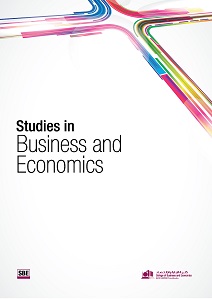Understanding the cost of change Function: A basis for using an effective small step change strategy
Abstract
This paper develops the cost of change function under the Continuous Improvement (CI) paradigm advocated by quality gurus such as Deming, Taguchi, and Shingo. CI is considered to be focusing on frame bending or minor changes while Organizational Change (OC) is considered to be focusing on frame breaking or major changes. The cost of change function is modified to be a discrete function incorporating a monitoring cost component and a doing cost element, which leads to a better understanding of the multiple tradeoffs: a) between the number of smaller steps to be taken to achieve the desired or planned change and the total cost of change, and b) between the total cost of change and the time needed to achieve the desired change. It is proposed to seek validation of the modified cost of change function by interviewing senior management personnel, who have project management and/or change management experience, such as managing six-sigma projects.
Metrics
##plugins.themes.bootstrap3.article.details##
Business
• Anderson P and Tushman ML (1990) Technological discontinuities and dominant designs: a cyclical model of technological change. Admin. Sci. Q. 35, 604-633.
• Brocka BB and Brocka MS (1992) Quality Management: Implementing the Best Ideas of the Masters. Irwin, Homewood, I!Ldestruction. Res. Policy 14, 3-22.
• Choi T (1995) Conceptualizing continuous improvement: implications for organizational change," OMEGA the International Journal of Management, Science, 23, 6, 607-624.
• Cole, RE (1999) Managing Quality Fads, Oxford University Press, New York.
• Deming WE (1986) Out of the Crisis. MIT Press, Cambridge, Mass.
• Dooley K and Van de Yen A (1999) Explaining complex organizational dynamics. Organization Science 10, 358-372.
• Fleming Rand Rother M (1991) A practical approach to continuous improvement Metal Forming August, 35-38.
• Hahn G, Hill W, Hoevl R, and Zinkgraf S (1999) The impact of sigma improvement - a glimpse into the future of statistics. The American Statistician 53(3), 208-215.
• Holt CC, Modgliani F, Muth JF and Simon HA(1960) Production Planning Inventories and Work Force, Prentice Hall, New York.
• Imai M ( 1986) Kaizen: The Key to Japan's Competitive Success. Random House, New York.
• Kurt Lewin, (1952) "Group decision and Social Change," in G. E. Swanson, T.M. Newcomb, and E. L. Hatiley, eds., Readings in Social Psychology. Holt, Reinhart & Winston, New York.
• Lindeman K, Schroeder RG, Zaheer, S, and Choo AS (2003) Six Sigma: a goal-theoretic perspective. Journal of Operations Management 21, 193-203.
• Pinto PA and Hahn CK (1993) Continuous change cost function: A basis for continuous improvement, Proceedings for the International Meeting of the Decision Sciences Institute, Seoul, S. Korea .
• Poirier CC and Houser WF (1993) Business Partnering for Continuous Improvement. Berrett-Koehler, San Francisco.
• Poole MS and Van de Yen AH (2004) "Theories of Organizational Change and Innovation Processes" in M.S. Poole and A. H. Van de Yen, eds., Handbook of Organizational Change and Innovation Processes, Oxford University Press, New York.
• Porras JI and Silvers RC (1991) Organization development and transformation. A. Rev. Psycho!. 42,51-78.
• Romanelli E and Tushman ML (1994) Organizational transformation as punctuated equilibrium: an empirical test. Acad. Mgmt. J. 37, 1141-1166.
• Schroeder DM and Robinson AG (1991) America's most successful export to Japan: continuous improvement programs. Sloan Mgmt. Rev. Spring, 68-91.
• Spear, S and Bowen HK (1999) Decoding the DNA of the Toyota Production system. HBR, Sept.-Oct.
• Suzaki K (1987) The New Manufacturing Challenge: Techniques for Continuous Improvement. Free Press, New York.
• Taguchi G. Elsayed EA and Hsiang T (1989) Quality Engineering in Production Systems. McGraw-Hill, New York.
• Tushman ML and Romanelli E (1985) Organizational evolution: A metamorphosis model of convergence and reorientation. In Research in Organizational Behavior (Edited by Cummings LL and Staw BM), Vol. 7. JAI Press, Greenwich, Conn.

